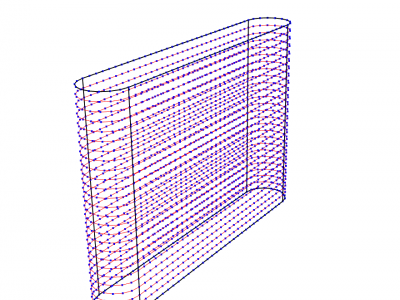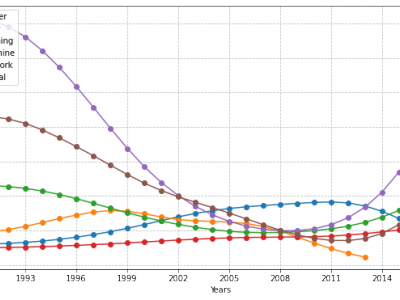Clustering algorithms
This dataset contains simulation values from thermo-mechanical finite element analysis simulations using ABAQUS. Each simulation is one of 192 unique process parameter settings which includes varying laser power, scan speed, layer height and cooling assumptions. The geometry for each simulation is a hollow rectangluar box with rounded corners such that they form semi-circles. The wall thickness of each simulation is exactly the width of the focused laser.
- Categories:
 140 Views
140 Views
- Categories:
 201 Views
201 ViewsPROTEIN STRUCTURE AND SYNTHETIC MULTI-VIEW CLUSTERING DATASETS
Multi-View Clustering (MVC) datasets used in the following paper:
Evolutionary Multi-objective Clustering Over Multiple Conflicting Data Views. Authors: Mario Garza-Fabre, Julia Handl, and Adán José-García. IEEE TRANSACTIONS ON EVOLUTIONARY COMPUTATION. Accepted for publication, November 2022.
This entry contains all 420 datasets used in the paper, including:
- Categories:
 279 Views
279 Views
This document provides the data for the case studies of the work “Priority Chronological Time-Period Clustering for Generation and Transmission Expansion Planning Problems with Long-Term Dynamics”.
- Categories:
 300 Views
300 ViewsBy querying open data of notorious scientific databases via representational state transfers, and subsequently enforcing data management practices with a dynamic topic modeling approach on the referred metadata available, this work achieves a feasible form of article set analysis and classification. Research trends for a given field in specific moments are identified, and also the referred trends evolution throughout the years.
- Categories:
 560 Views
560 Views
This dataset is compiled from five years of observation from the Global Precipitation Measurement (GPM) core observatory Microwave Imager (GMI) and Dual-Frequency Precipitation Radar (DPR). Retrieved emissivites and surface backscatter cross sections are gridded at quarter-degree, monthly resolution separately for non-snow-covered land, snow-covered land, and sea ice.
- Categories:
 604 Views
604 ViewsMotor point identification is pivotal to elicit comfortable and sustained muscle contraction through functional electrical stimulation. To this purpose, anatomical charts and manual search techniques are used to extract subject-specific stimulation profile. Such information being heterogenous they lack standardization and reproducibility. To address these limitations; we aim to identify, localize, and characterize the motor points of forearm muscles across nine healthy subjects.
- Categories:
 1125 Views
1125 Views


